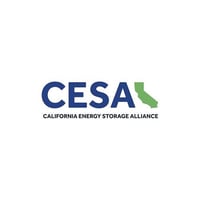June 23, 2021 By Sergio Duenas, Lily Backer, and Melanie Davidson
Energy storage as a transmission non-wires alternative
November 5, 2016
Jin Noh, Policy Manager
Energy storage is a silo buster! It represents an asset class that transcends the usual asset classes of generation, load, and transmission and distribution infrastructure by being able to operate as all three asset types. Energy storage is the LeBron James of energy technologies.
Storage has been recognized as generation and load through its discharging and charging capabilities, which are reflected in grid planning exercises, interconnection processes, wholesale market participation, and utility solicitations. However, across all of these processes, there has been little traction in recognizing energy storage as a transmission and distribution asset.
Historically, the electric grid has consisted of centralized generation resources delivering one-way power to loads via an elaborate and wide-spanning infrastructure consisting of transmission and distribution (T&D) lines, transformers, and substations. Under this paradigm, any increase in load in certain areas of the grid was addressed by transmission operators and participating transmission owners (PTOs) through transmission infrastructure investments designed to relieve congestion and thermal overload, add generating capacity, provide voltage support, and/or connect load with additional generation capacity.
Nowadays, however, planners are transitioning from planning the electric grid around one-way power flow system to a more dynamic two-way one. Energy storage, as well as locally sited distributed energy resources (DERs) have helped to change loads and shift the location of generation centers. Energy storage can now serve to offset transmission and distribution investments by shifting generation and loads in time. Additionally, customers are now more empowered to install distributed generation to meet load needs. Energy storage as a non-wires alternative (NWAs) that relieves congestion and defers the need to upgrade or replace equipment is an important new area of regulatory focus. This is driven by the fact that energy storage in particular provides a number of benefits over traditional “wires” – lines, transformers, and new substations – solutions in deferring transmission infrastructure investments or upgrades:
-
Reduced environmental impact: NWAs avoid infrastructure siting concerns faced by traditional wires solutions and support California’s pursuit of its energy and environmental goals by effectively integrating renewable generation.
-
Quick deployment: Certain NWAs can be designed and constructed relatively quickly compared to traditional wires solutions (often requiring 5 to 10 years of lead time), which allows them to mitigate urgent and rapidly emerging T&D upgrade needs.
-
Reduced financial risk through modular deployment: NWAs have the advantage of being developed incrementally as transmission needs emerge or change rather than in a large, long-term lump-sum investment borne by ratepayers.
-
Reduced risk through geographically diverse siting: NWAs provide reliability advantages by being able to be sited in geographically diverse locations and by being sited closer to load (which reduces transmission losses).
In addition to functioning as a transmission or distribution asset, energy storage resources can also be utilized as a market resource, performing other grid support services (e.g., frequency regulation, flexible ramping, etc.) when not providing the transmission deferral service. In hours of the day when the energy storage resource is not needed to relieve transmission congestion, it could provide energy and/or ancillary services into the wholesale market to generate additional revenues and maximize the utilization of a transmission grid asset when not needed for specific deferral purposes. The ability to function as a transmission asset and a market resource is where energy storage could potentially prove most cost-effective versus traditional wires solutions. When viewed as a transmission asset alone, the true capabilities of energy storage resources are not fully captured, so making a fair economic comparison to traditional wire solutions is extremely difficult.
Despite these potential benefits, the traditional transmission planning process is still evolving new consensus methodologies to evaluate the specific benefits of non-wire alternatives such as energy storage that can function as both a transmission asset and a market resource, and allocate a portion of its costs through transmission rates (i.e., the Transmission Access Charge in California) while allowing the resource operator to recover the remaining portion of costs through market revenue. Currently, all transmission investments are recovered through transmission rates, a cost borne by all ratepayers. If grid planners explore how energy storage resources can meet reliability requirements provided by T&D infrastructure as well as function as economic and policy driven transmission solutions by, for example, reducing renewables curtailment (a growing issue as California advances toward its 50% RPS goal), they may find that energy storage is a cost-effective NWA for transmission reliability issues.
Understandably, there are also operational and availability concerns about a transmission asset functioning as a market resource. Such resources are not 100% dedicated to providing the transmission reliability function, which concerns grid operators whose job is to ensure the lights are on at all times. During any given hour, a contingency may occur that requires the transmission asset to provide relief and reduce thermal overloads. If the energy storage resource is providing market-facing grid services at that same time, the grid operator’s concern is that it would not be available (i.e., have the state of charge) to provide the intended transmission function. In addition, there may be concerns related that an energy storage resource as a transmission asset and a market participant may distort wholesale market prices if the resource does not bid at its true costs due to the partial recovery of costs through transmission rates.
These concerns, however, are not insurmountable. There are ways in which energy storage contracts could be negotiated and structured that set operational parameters to prioritize its reliability service such that the energy storage market participant assumes the responsibilities and risks for ensuring reliability. To address operational concerns, market rules could be established that dictate a certain level of charge from the dual resource to guard against these contingencies and critical reliability events. Regarding market price distortion concerns, market rules could be reformed to ensure that energy storage resources bid their energy and/or capacity at its true marginal costs. Alternatively, there could be innovative mechanisms that return transmission rate recovery to ratepayers for certain levels of market revenue generated from providing market-facing grid services.
In California, it is ecouraging to see that the California Independent System Operator (CAISO) is “exploring opportunities” in its 2015-2016 Transmission Plan to identify areas where NWAs can meet needs where there are reasonable timelines to allow for the development of preferred resources, such as energy storage. The CAISO states that “consideration should also be given to how the storage resource would be compensated for the benefits it brings to the system.” These sentiments were echoed recently as well in the CAISO’s preliminary study results and ongoing special studies for its 2016-2017 Transmission Plan. At the federal level, energy storage as a transmission resource has become a rejuvenated theme as well. The Federal Energy Regulatory Commission (FERC) announced a technical conference for November 9, 2016, in Washington, DC to discuss this very theme. Specifically, the topics to be discussed include compensation of these storage assets through transmission rates and for providing grid support services compensated in different ways.
These are both steps in the right direction, but the true test of NWAs, such as energy storage being treated on a level playing field with traditional wires solutions, will be when PTOs or third parties actually propose a non-wires project as the preferred solution. Some of these cost recovery and operational issues may not be resolved until we get actual non-wires projects in the ground that will determine whether partial rate recovery and/or market participation are appropriate for NWAs that may function as both a reliability solution and a market resource.



